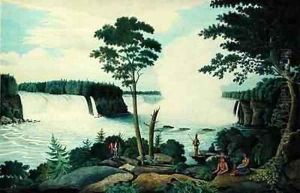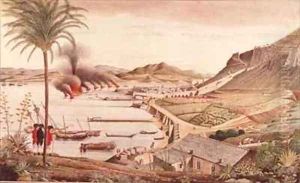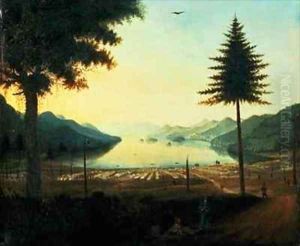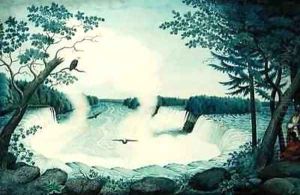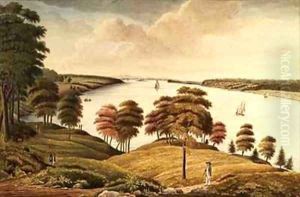Thomas Davies Paintings
Thomas Davies was a British artist known for his work as a landscape painter and etcher. He was born in 1737 in Shooter's Hill (now in South East London), England. Not much is known about his early life or training in art, but Davies eventually rose to prominence in the artistic community of the 18th century.
Davies was also an officer in the Royal Artillery, and his military career took him to various locations, including North America, where he would create some of his most notable works. His experiences as a soldier influenced his artistic subjects, often intertwining the depiction of landscapes with military scenes or engagements.
His art was characterized by attention to detail, particularly in his representation of the natural environment. He had an acute ability to capture the atmospheric conditions and light of a scene, which gave his landscapes a sense of realism that was appreciated in his time. He was a member of the Royal Academy, and his works were exhibited there from 1763.
Davies' most famous paintings include a series of views of the Hudson River and other North American landscapes, which are significant for their historical value as well as their artistic merit. These works provide a visual record of the British presence in North America during the period leading up to the American Revolutionary War.
Thomas Davies passed away in 1812, leaving behind a legacy as a skilled landscape painter who offered a unique perspective through his dual career as an artist and a military officer. His works are held in various collections, including the British Museum and the National Gallery of Canada, preserving the memory of the landscapes he captured and his role in documenting military history.
